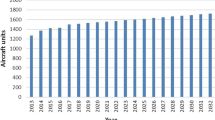Abstract
These experiments, which represent fire situations in a hospital patient sleeping room, clearly indicate that a door frame-mounted detector provides one of the best locations for optimum detector response in this occupancy. Identification of air motion as the single most important factor influencing reaction time of early warning detection devices emphasizes the need to evaluate smoke and ionization detectors under actual conditions of use.
Similar content being viewed by others
References
Eggleston, L. A., “Fire Tests in a Hospital Room,” Southwest Research Institute, Project 3-2947-350 (June 25, 1971).
“General Standards of Construction and Equipment for Hospitals and Medical Facilities,” U. S. Public Health Service (1969 revision).
Claudy, W. D., “Carbon Monoxide in Fire Fighting,” NFPA No. F21-1, Reprinted fromFiremen (1954), 11 pages.
Coulter, G. L., “Automatic-Closing Smoke Barrier Doors,”Fire Journal, Vol. 66, No. 6 (November 1972).
Additional information
Note: Mr. Waterman is Senior Research Engineer, Safety Research, IIT Research Institute; Mr. Degenkolb is a practicing Fire Protection Engineer from Glendale, California; Mr. Stickney, Oregon State Fire Marshal at the time this paper was written, is now retired.
Rights and permissions
About this article
Cite this article
Waterman, T.E., Degenkolb, J.G. & Stickney, C.W. A study — Early warning fire detection performance in the hospital patient room. Fire Technol 10, 287–303 (1974). https://doi.org/10.1007/BF02589987
Issue Date:
DOI: https://doi.org/10.1007/BF02589987




